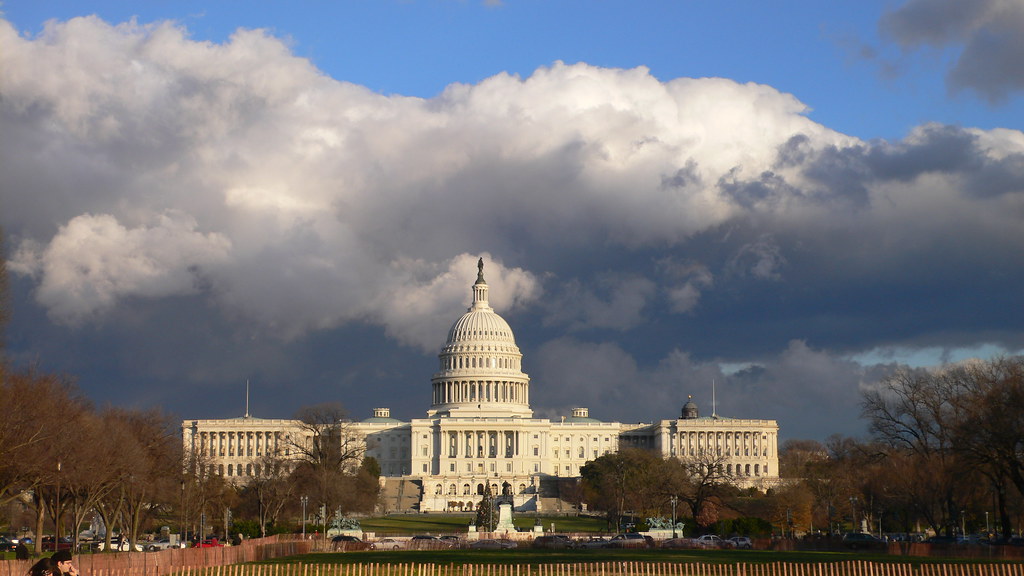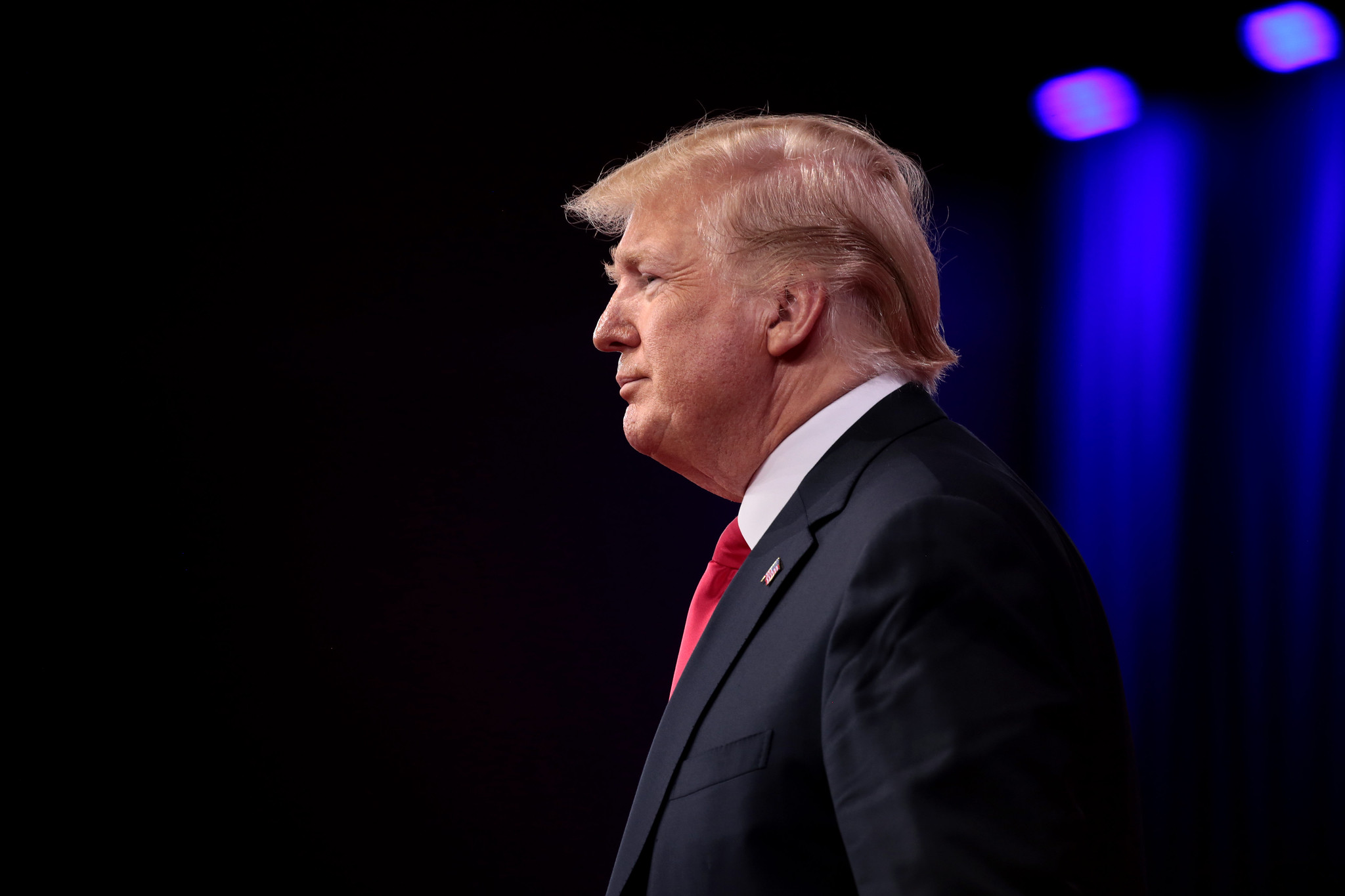How Should the House Handle Impeachment?
House Speaker Nancy Pelosi is approaching a fork in the road on the House’s impeachment inquiry. The White House has indicated an unwillingness to cooperate with the inquiry, and so the House has to decide whether to litigate or negotiate over documents and testimony or move forward without them. The House already possesses strong enough evidence to move to a vote on articles of impeachment, and Pelosi can decide to do so quickly.

Published by The Lawfare Institute
in Cooperation With

House Speaker Nancy Pelosi is approaching a fork in the road on the House’s impeachment inquiry. The White House has indicated an unwillingness to cooperate with the inquiry, and so the House has to decide whether to litigate or negotiate over documents and testimony or move forward without them. The House already possesses strong enough evidence to move to a vote on articles of impeachment, and Pelosi can decide to do so quickly. That said, the Ukraine story continues to unfold as the days go on, and Pelosi might decide to extend the impeachment investigation in the name of uncovering more evidence and details.
As a political matter, there are benefits and risks to either approach. But if Pelosi does decide to extend the investigation, the House must be careful to confer the maximum amount of legitimacy on the process. Already, the president and his allies are arguing that the inquiry is somehow illegitimate as a matter of process and unfair to the president; Congress should not add more fuel to this fire.
It is true that the president and his allies are likely to dismiss the impeachment process as a partisan witch hunt no matter what the House does. But procedural fairness is not about satiating critics offering insincere objections—it is about conducting a proceeding that the public has reason to and should regard with confidence.
Below are some thoughts on the current options available to the House and how each might be pursued in a manner that fully embraces reasonable process protections, without falling into the trap of bad-faith arguments designed to impede the inquiry.
First, as mentioned above, the House could simply proceed to an impeachment vote now—that is, without conducting additional investigative work. This is not as crazy as it might sound. At its heart, the question of whether the president should be impeached for his conduct with regard to Ukraine is not really a disagreement about the facts of what happened or the appropriate process. The president, after all, has not even denied that conduct. Instead, this is a question about whether what the president has done constitutes impeachable conduct. There is already ample evidence of what occurred, largely provided by the White House itself and by former administration officials directly involved in the matter.
The July 25 call memo of the conversation between Trump and Ukrainian President Volodymyr Zelensky—which has already been released by the White House—could fairly be Exhibit A for an article or articles of impeachment on abuse of power. A reasonable member could conclude that the texts provided by former Special Envoy Kurt Volker demonstrate that Trump’s requests on the call were not whims unsupported by additional, concrete action. Likewise, a reasonable member could conclude that Trump’s own public comments—including calling for China, in addition to Ukraine, to investigate his political opponents—buttress the argument for impeachment. There is no real need, at this point, for the House to obtain additional information or testimony related to the intelligence community whistleblower complaint that sparked the inquiry. The fact that this evidence has been obtained rapidly, rather than pursuant to protracted litigation, does not make it any less persuasive as to what happened here.
Additionally, to the extent the White House declines to immediately produce a reasonable degree of additional materials demanded by the House, members are justified in concluding that Trump’s obstruction of Congress’s oversight and investigation responsibilities supports an additional article of impeachment. Of course, there is a host of evidence to support an obstruction article both from the past few weeks and over the preceding nine months, including Trump’s various statements and tweets on the matter and his brazen refusal to recognize the legitimate oversight of a co-equal branch. White House counsel Pat Cipollone’s defiant letter to Congress serves as a capstone example of the White House approach: obstructing while offering the flimsiest of arguments as justification.
Cipollone’s letter indicates that the White House is not inclined to cooperate any further with the impeachment inquiry. And even private citizens associated with Rudy Giuliani and apparently involved in the matter—who have been asked by the committee to sit for depositions and have now been arrested by federal authorities on campaign finance charges—are using the White House’s letter as a shield to justify noncooperation with the inquiry. Reporting does indicate that some individuals from whom Congress would like to hear but whose incentives are less closely aligned with President Trump’s may lead to additional cooperation. On the whole, however, it is reasonable to anticipate a high degree of stonewalling from the president’s allies.
All of that would support the view that the House has sufficient evidence to sustain multiple impeachment articles, that it is unlikely that substantial additional information can be compelled on a reasonable timeline, and that there is little to be gained, and momentum to be lost, by the delay caused by White House stonewalling over additional production demands. These are grave constitutional matters, and the evidence against the president is serious. The House would be justified in determining that it should now fulfill its constitutional function by voting on the matter and leave it to the Senate to decide what the Constitution requires of that body.
At the same time, it would also be reasonable to conclude that the investigation is not yet complete. There is additional evidence to be gathered—and the full record might persuade members of Congress who have not yet made a decision. Impeachment is a grave remedy, and part of ensuring its legitimacy is ensuring it is done in a manner that has maximum possible bipartisan support. Additionally, the American public deserves to know the full scope of what has occurred in the executive branch of government, and moving to an impeachment vote prior to gathering all possible evidence might deny the public that opportunity.
If Pelosi decides to continue the investigation, there are a number of different approaches she might take in doing so. All of these should be considered as a question of both faithfully discharging the constitutional function and preserving public faith in the integrity of the proceedings.
One approach would be to simply stay the course and make clear that the existing procedural protections are sufficient. Congressional Republicans and the White House are trying to make hay out of the argument that the current inquiry is somehow invalid or deficient. But that argument is facially inaccurate. It is up to the House of Representatives, and not the White House, to decide what procedures will be used in the case of impeachment. There is nothing in the Constitution nor in the House rules that requires a vote to begin an impeachment inquiry. In asserting that an impeachment proceeding is illegitimate based on procedure, the executive branch is attempting to claim for itself a power and judgment that the Constitution has exclusively committed to a different branch of government.
The House has the authority to organize an impeachment matter in any way it chooses. Beyond that, a full House vote would be largely symbolic (though the question of whether a formal vote would affect pending litigation remains open). These objections are rooted in a claim of prior precedent—namely, the process that was observed during the impeachments of Richard Nixon and Bill Clinton. As two of the present authors have explained elsewhere, in the intervening years since the Nixon and Clinton impeachments, the House rules have migrated subpoena power to committees and their chairs such that a full House vote is not necessary to vest committees with sufficient investigatory tools. In other words, in the past the House needed to vote in order to grant the committees the necessary powers, but now the committees already have those powers—making a vote unnecessary. And to the extent that there are minor differences in the nature of committee procedures from prior cases, that is a reflection of changes in the broader institution.
For example, during the Clinton impeachment, subpoenas could be issued by the chair and ranking member of the relevant committee acting together—unless either the ranking member or the chair objected, in which case he could refer the matter to a full committee vote. That, of course, had the practical effect of allowing the majority to have veto power over any subpoenas the minority might wish to issue. The current distribution of subpoena power, in contrast, grants the chairs of most committees the ability to issue subpoenas unilaterally, without needing to take the matter to the full committee; the number of committees with such power doubled between 2013 and 2015 under Republican control of the House. In substance, the only difference now is the lack of the additional procedural hurdle of a committee vote, but that inconvenience was largely wiped away by Republicans themselves when they wished to conduct oversight of the Obama administration. The idea that Republicans would object to this arrangement now on the grounds of fairness smells of hypocrisy.
Similarly, Republicans object to the House’s posture on the ability of agency counsel to attend depositions, pointing to an Office of Legal Counsel memo that argues that excluding such participation is unconstitutional. While a House committee (Oversight and Government Reform) was first granted permanent staff deposition authority under Democratic control in 2007, Republicans expanded committee deposition power beginning in 2015 and added a specific restriction of witnesses’ counsel to “personal, nongovernmental” attorneys when they dramatically increased the number of committees that were permitted to conduct staff depositions in 2017. (Democrats, for their part, relaxed the rules for member participation in depositions at the start of this Congress.)
Other provisions that Republicans have recently criticized the House for using in the impeachment context have longer histories. Several committees have cited language warning executive branch officials that their salaries could be withheld if they “prohibit … or prevent … any other … employee of the Federal Government from having any direct oral or written communication with … Congress”—but this language has been applied government-wide through spending bills since 1998 and has its roots in legislation dating to the early 20th century.
Pelosi would be reasonable to adopt the position that, as a fundamental matter, the basic protections are the same as they were in past impeachments—and to the extent there are differences in the procedures, Republicans are only being asked to live with the rules they themselves adopted and championed. Explaining these facts clearly would help the public recognize the basic legitimacy of the current situation.
There is, however, one area in which the president and his defenders can point to a genuine difference between the current rules and those that governed the Nixon and Clinton proceedings: the procedural protections afforded to the president. While the House is not compelled by any constitutional principle to recognize specific rights of the president in impeachment, doing so is a question of basic fairness. And creating a process that is fair, both in fact and in perception, is critical to ensuring the proceedings will be viewed as legitimate in the face of inevitable claims this is all a partisan “witch hunt.”
The current impeachment inquiry is being conducted by six separate committees. While it is likely that final articles will come through the House Judiciary Committee, the other committees—in particular, the House Intelligence Committee—are candidly engaging in fact-finding for impeachment purposes. At this point, however, only the House Judiciary Committee has adopted a resolution that extended explicit procedural rights to the president. It is unclear the extent to which the others may feel compelled to adopt similar procedures.
The House might vote as a full body to make these protections govern the impeachment work of all relevant committees. Members of Congress could even reinstate some of the procedural hurdles related to issuing subpoenas that have been previously eliminated, if they so wished.
Pelosi should proceed with caution here, however. While a careful read of Cippollone’s letter reveals many impassioned objections to process irregularities, nowhere does the White House commit to actually cooperating if the House were to authorize the inquiry and adopt protections for the president. In other words, there is a risk of the House taking a vote to satisfy the president’s stated objections, only for him to turn around and claim he is refusing to produce documents and witnesses anyway on some other ground. If she takes this approach, Pelosi would be wise to offer a vote only in exchange for express written commitments from the White House regarding access to witnesses and documents. If the president refuses the offer and will not pledge cooperation, then the speaker would be justified in moving ahead in the manner she deems appropriate.
Such a deal still leaves open the question of whether the resolution the Judiciary Committee adopted last month includes satisfactory protections. As two of us summarized last month, under those procedures:
- The chairman can designate full committee or subcommittee hearings as being for the purpose of obtaining information in connection with the committee’s impeachment investigation.
- Committee staff designated by the chairman and ranking member can ask questions of witnesses for a total of one hour, equally divided across the parties (in addition to the normal questions from members).
- Information obtained through letter requests, subpoenas, depositions, transcribed interviews or interrogatories will be treated as “executive session” material (meaning the information will not be public and cannot be released by members or staff without the consent of the committee).
- The president’s counsel may respond in writing to information presented in open session, and the chairman, after consultation with the ranking member, may invite the president’s counsel to review and respond in writing to executive session materials.
If the five other committees adopted similar resolutions, they could certainly tailor additional procedures to meet their specific needs. The Intelligence Committee, for example, already grants staff the ability to question witnesses in certain circumstances.
These protections are defensible as extending sufficient process to the president as a matter of fairness. However, these protections, specifically #4 above, are more limited than those available to Nixon and Clinton. In both the Nixon and Clinton proceedings, the president and his counsel were invited to attend all hearings, including any held in executive session, and the president’s counsel could raise objections relating to examination of witnesses and question the witnesses himself. Not so in the Judiciary Committee resolution.
Pelosi can make the case that each presidential impeachment is different and that what makes sense procedurally here is not the same as in past impeachments. Indeed, the comparable committee “due process” procedures for the president that were put in place in 1974 and 1998 came at what many would consider a later stage in the process. In 1974, procedural rights for President Nixon were only adopted in May, as noted by Congressional Quarterly’s recap of the events: “Prepar[e] for the presentation of the evidence” (emphasis added), after it had begun to be gathered pursuant to an authorizing resolution passed by the full House the previous February. And in the Clinton impeachment, the Starr Report formed the bulk of the informational record for impeachment. Procedural protections for the president were adopted in early October, after the Starr Report had come out and the accompanying material had been turned over to the House. President Clinton availed himself of the procedures selectively. His private attorney questioned Independent Counsel Starr when he appeared before the committee, but Clinton’s lawyers only called witnesses in December, just days before the Judiciary Committee voted out articles of impeachment. There was also a presentation from White House Counsel Charles Ruff.
It is possible to defend the procedural difference, but it does complicate the picture for the public. The idea that President Trump should have the same procedural protections as Nixon and Clinton is a clear and comprehensible talking point: What was fair for past presidents should be fair for this one. However, the legitimacy that might be gained from incorporating these protections will need to be weighed against the real risk of Trump abusing those rights to undermine the proceedings entirely. As two of us wrote earlier in the year, one can easily imagine President Trump sending his attorney to take full advantage of such rights in televised proceedings. Trump could even show up personally. It is easy to see how these protections might be used by the current incumbent not to advance a substantive defense but, rather, to turn the whole proceeding into a circus.
One possible compromise would be for the majority to take the view that such procedural protections for the president have no bearing on the gathering of evidence by the relevant committees but, rather, on the presentation of the evidence by the Judiciary Committee in anticipation of a committee vote on articles of impeachment. This would allow the president to have the full scope of protections afforded to Clinton but only at a similarly late stage of the proceedings and not in a period in which they could be wielded to inhibit fact-finding.
At the end of the day, it is for the House and not the president to determine the appropriate procedures for this impeachment inquiry. But Congress has reason to care about procedural fairness and perceptions of legitimacy, unrelated to capitulating to the president’s specious assertions. It is the duty of Congress to shepherd the nation through this grave moment in a manner that eliminates as much noise surrounding the proceedings as possible and that focuses on the core, uncontested conduct at issue—Trump’s efforts to pressure Zelensky and others into investigating the Bidens—and whether it represents an impeachable abuse of office.






